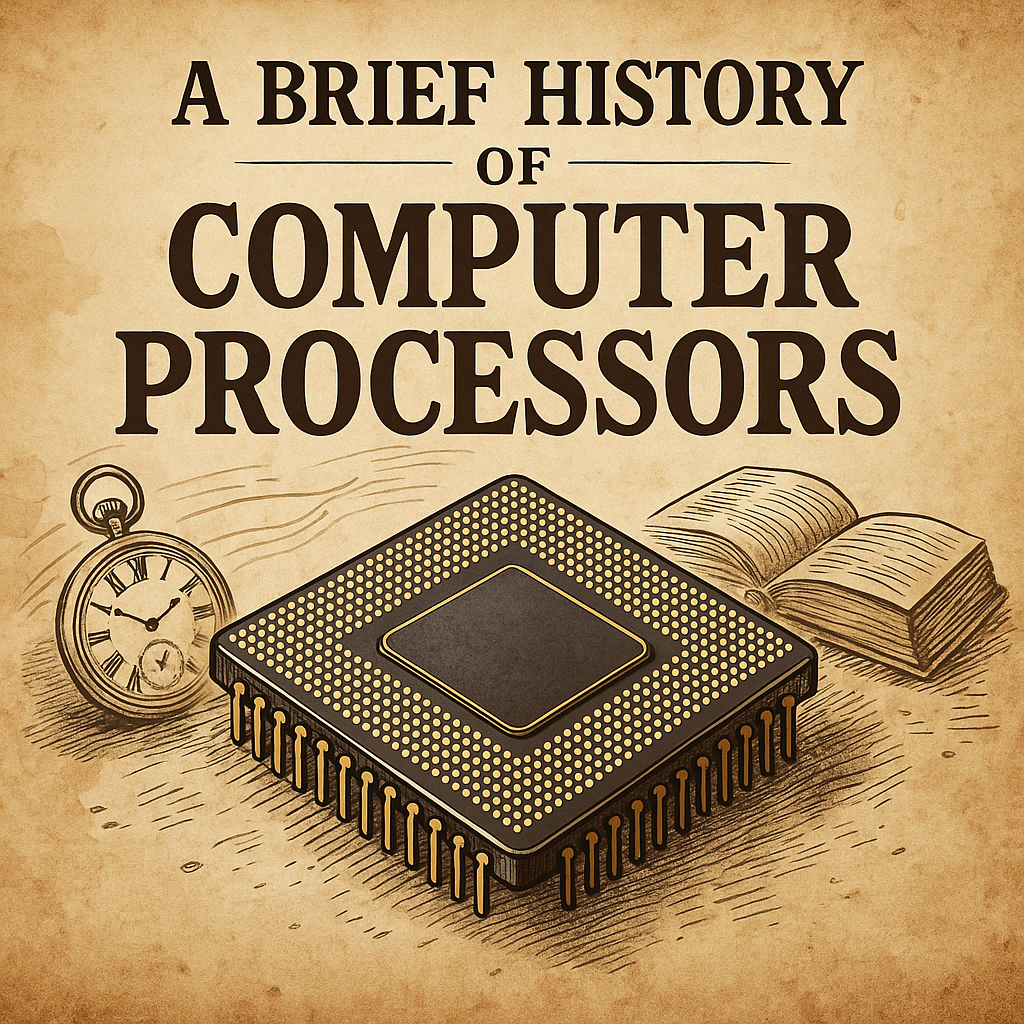The Evolution of Vintage CPUs: From Early Chips to Iconic Designs
The CPU (Central Processing Unit) has always been at the heart of every computer – the component responsible for performing instructions and running software. The history of vintage CPUs begins in the 1970s with the release of Intel’s first microprocessor. From the very first 4-bit processors to the multi-core powerhouses of today, CPUs have come a long way in terms of performance, efficiency, and design.
Let’s take a journey through the decades and explore the fascinating history of processors. Intel’s timeline showcases the birth and evolution of its most iconic vintage CPUs.
🕰️ 1970s – The Dawn of the Microprocessor
In 1971, Intel introduced the Intel 4004, the world’s first commercially available microprocessor. It was originally designed for a calculator but laid the groundwork for all future CPUs. With just 2,300 transistors and a clock speed of 740 kHz, it was primitive by today’s standards – but revolutionary at the time.
Shortly after, chips like the Intel 8008, 8080, and Zilog Z80 hit the market. These were used in early personal computers such as the Altair 8800 and the TRS-80.
💾 1980s – The Rise of x86 and 16-bit Computing
In 1978, Intel launched the 8086, introducing the now-iconic x86 architecture, which would dominate the PC world for decades.
Later in the 1980s, Intel released:
- 80286 – introduced protected memory modes
- 80386 – first 32-bit processor
- 80486 – added a math co-processor (FPU)
This decade also saw the rise of competitors like AMD, Cyrix, and Texas Instruments, pushing innovation forward.
⚙️ 1990s – The Megahertz War & Vintage Ceramics
The 90s were all about higher clock speeds and more consumer-focused branding. Intel’s Pentium series and AMD’s K5/K6 chips became popular in home and office PCs.
Some standout features of 90s processors:
- Ceramic packages (now prized by collectors)
- The introduction of MMX and early 3D instructions
- Growing demand for overclocking and DIY builds
Rare CPUs from this era – especially those with gold tops or unusual form factors – are highly collectible today.
🔥 2000s to Today – Multi-Core and Mobile Power
The early 2000s introduced a shift from increasing frequency to adding multiple cores. Intel’s Pentium 4 hit thermal limits, leading to the development of the Core architecture.
Meanwhile, AMD made headlines with:
- Athlon 64 – the first consumer 64-bit CPU
- Phenom and later Ryzen – excellent performance at competitive prices
Today’s CPUs, like the Intel Core i9 or AMD Ryzen 9, can have 12+ cores, boost to 5 GHz, and support AI, encryption, and massive parallel tasks – all while using a fraction of the power.
🧩 Why Collectors Value Vintage CPUs Today
To most people, old CPUs are just outdated tech. But to enthusiasts and collectors, they’re engineering artifacts. They tell the story of how computing evolved – from calculators to cloud computing.
Collectors often look for vintage CPUs that are historically significant or rare, such as:
Intel 486DX, Pentium MMX, Pentium Pro
Classic processors known for their role in the evolution of personal computing and valued for their ceramic packaging and gold pins.AMD K6-2, Athlon Thunderbird, Duron
Popular among collectors for their performance legacy and distinctive chip designs from the late 1990s.Rarer CPUs from Cyrix, WinChip, or early IBM
Hard-to-find models that appeal to enthusiasts due to their limited production and unique architectures.Exotic engineering samples and CPUs with gold-plated heat spreaders
Rare prototypes and limited-run chips featuring exposed dies or gold components, often used for testing or early development.
🛒 Looking for Vintage CPUs?
At CPU Vintage, we specialize in buying and selling rare, collectible processors. Whether you’re searching for that elusive chip from your childhood PC or want to turn your drawer of old parts into cash – we’re here to help.
✅ Trusted by collectors
🚚 Fast worldwide shipping
📩 Contact us at info@cpuvintage.com
